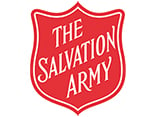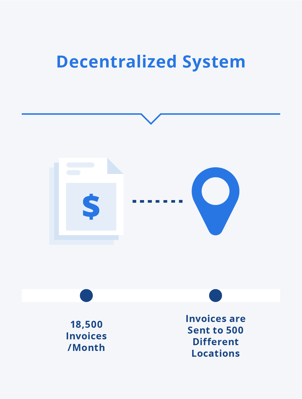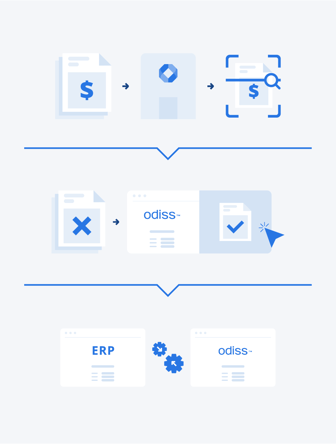Case Study: Accounts Payable Automation
Managing Over 200,000 Invoices Annually
About our client
 The Salvation Army’s operations in Canada began in 1882 and it has grown to become the largest direct provider of social services in the country next to the government. The Salvation Army gives hope and support to vulnerable people every day in 400 communities across Canada and Bermuda.
The Salvation Army’s operations in Canada began in 1882 and it has grown to become the largest direct provider of social services in the country next to the government. The Salvation Army gives hope and support to vulnerable people every day in 400 communities across Canada and Bermuda.
Community and social services provided by The Salvation Army include: hunger relief for individuals and families through food banks and feeding programs; shelter for people experiencing homelessness and support for those needing housing; rehab for those struggling with addiction; Christmas assistance such as food hampers and toys; after-school programs, camps and school nutrition programs for children and youth; and life-skills classes such as budgeting, cooking for a family and anger management.
The Salvation Army also includes National Recycling Operations (NRO) Thrift Stores in Canada, which number more than 200, collecting and selling second-hand clothing and other goods in support of the community.
The challenge
 On a daily basis, The Salvation Army receives 900 invoices or approximately 18,500 every month. 40% of these invoices arrive in the mail as paper invoices while 60% arrive as email attachments.
On a daily basis, The Salvation Army receives 900 invoices or approximately 18,500 every month. 40% of these invoices arrive in the mail as paper invoices while 60% arrive as email attachments.
Invoice processing at The Salvation Army was decentralized with invoices being sent to approximately 500 different physical locations.
All these invoices would be approved and paid locally or forwarded to one of four finance offices in Canada for payment. Archived invoices were imaged in one location and paper filed in the other three. This approach was time consuming, costly and difficult to control.
The Salvation Army was looking for a way to centralize the process to utilize their new ERP solution for workflow and AP automation processes. To facilitate the invoice centralization, The Salvation Army went to tender to find a solution partner who could assist them with the front end processing required to support their needs.
The solution
The Salvation Army embraced Octacom as their valued invoice processing partner after a comprehensive tendering, evaluation and selection process. Octacom was identified as a company with the needed experience and process know how to deliver a high-quality OCR and accounts payable scanning and data capture process. Octacom was recognized as being “the right fit” for The Salvation Army.
Octacom now provides a full front end AP automation service for The Salvation Army’s invoices, including exception management. Octacom’s comprehensive solution encompassed the following elements:
AP Automation and Imaging Services
Odiss™ Document Management Software for Exception Management
The Salvation Army identified protocols for invalid invoices amongst other exceptions. Additionally, The Salvation Army indicated special instructions for each invoice type from each of its units in the field. Octacom leveraged its Odiss™ software to roll out an Exception Portal for The Salvation Army to review exception invoices, route for appropriate approvals, make amendments prior to approval as well as determine how to process return-to-vendor instructions. Users across Canada are now on the Odiss™ Exception Portal, and at some stage in the future, perhaps vendors will be granted access to submit directly to Odiss™, optimizing automation in the AP department at The Salvation Army.The process
 Invoice Receipt and Imaging: Invoices are received by PO box, email, courier and portal submission. Invoices are opened, sorted and digitized prior to being processed through Octacom’s OCR and QC processes to validate data encompassed thereon.
Invoice Receipt and Imaging: Invoices are received by PO box, email, courier and portal submission. Invoices are opened, sorted and digitized prior to being processed through Octacom’s OCR and QC processes to validate data encompassed thereon.
Exception Portal Management: Invoices that are invalid, deemed exceptions or that failed vendor validation, as determined by automated comparison to the ERP’s vendor master, are loaded into the Odiss™ Exception Portal for review by field units and/or finance department users. These invoices can be annotated, deleted, returned to the vendor or simply approved through the portal.
ERP Upload: Octacom’s integration with The Salvation Army’s ERP platform allows for automated upload of processed and validated invoices, for The Salvation Army to then run various workflow approvals prior to payment.
The results
The Salvation Army achieved their goal of creating a centralized AP process that provides high-quality images and accurate invoice index details to their users across Canada within their ERP. This goal was met in a 90-day implementation and without any upfront capital investment.
With this new process, The Salvation Army has been able to greatly reduce the hours and efforts that were required in their paper-based environment and are benefiting from the associated savings.
For more information about this case study, invoice processing and how a similar approach may be beneficial for your company, please contact Octacom.
Click here to download this case study.
